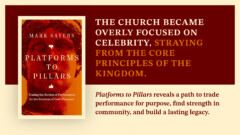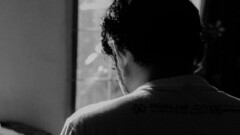![]() In the late 18th century, philosopher Jeremy Bentham designed the panopticon. This was a new kind of prison that would allow every (“-pan”) prisoner to be under the gaze, or potential gaze (“opticon”) of a guard at all times. This prison would be circular and have the general appearance of a wheel. Cells were to be arrayed in tiers along the outer wall while the center, the spoke, would hold an inspection tower for the guards. Because one-way glass had not yet been invented, Bentham imagined various means through which the guards could conceal their presence. Prisoners would know the guards were in the tower, they would know that at any moment the guards might be looking at them, but they would never be able to tell exactly when this was happening.
In the late 18th century, philosopher Jeremy Bentham designed the panopticon. This was a new kind of prison that would allow every (“-pan”) prisoner to be under the gaze, or potential gaze (“opticon”) of a guard at all times. This prison would be circular and have the general appearance of a wheel. Cells were to be arrayed in tiers along the outer wall while the center, the spoke, would hold an inspection tower for the guards. Because one-way glass had not yet been invented, Bentham imagined various means through which the guards could conceal their presence. Prisoners would know the guards were in the tower, they would know that at any moment the guards might be looking at them, but they would never be able to tell exactly when this was happening.
Authors Ben and Marthalee Barton describe this kind of institution.
The architecture incorporates a tower central to a circular building that is divided into cells, each cell extending the entire thickness of the building to allow inner and outer windows. The occupants of the cells are thus backlit, isolated from one another by walls, and subject to scrutiny both collectively and individually by an observer in the tower who remains unseen. Toward this end, Bentham envisioned not only venetian blinds on the tower observation ports but also maze-like connections among tower rooms to avoid glints of light or noise that might betray the presence of an observer.
Benthem believed that such an institution would allow a small number of guards to oversee a large number of inmates. He believed that when prisoners knew they were potentially being watched, they would remain compliant. The prisoners would never know if the guard had turned his back and thus they would never feel liberty to take advantage of solitude.
Benthem imagined that this concept might be extended beyond prisons to asylums and factories—even daycares and schools. In the end few panopticons were built; there are a handful prisons in the world that followed some of Bentham’s principles, but few were able to overcome the architectural and technological constraints. It was not until the advent of CCTV that we could capture his vision of the invisible, all-seeing eye.
But the panopticon has lived on in the world of metaphor. George Orwell’s Big Brother who was always listening and often watching is not far removed from Bentham’s prison guard. More recently, alarmed technologists have looked to the panopticon as a metaphor for the growing number of CCTV cameras on our streets and in our buildings, the drones that are taking to the sky, the license plate readers that are appearing above our roads, the cell phones that report our movements, the on-board computers that track our driving, and the social media through which we broadcast our every thought and action. In some ways we are all prisoners of the panopticon and in some ways we are all in the guard tower. We watch and are watched.
We are right to be alarmed as the evidence mounts that we live in a surveillance society. The technology that purports to protect us, that claims to extend our freedom, will at some point begin to take our freedom from us. After all, this technology, like all technology, inhabits a sinful world.
Yet as Christians we know the greater fear of being under the unblinking eye of God (see Matthew 6 and Psalm 33). We are all under surveillance at all times by One who sees and knows all things. He sees not only what we do, but who we are in our deepest thoughts, desires and motives. He knows us better than we know ourselves. And he tells us that we will all have to give an account of each one of our thoughts and each one of our actions. Where a prison guard may beat an unruly prisoner or extend his sentence, God has the power and authority to cast body and soul into hell.
The great joy and hope of the gospel is that God does not survey us as a guard keeps a suppresive watch on his prisoners, but as a Father who keeps a loving and tender eye on his children. Though we are responsible for each ugly thought and deed, we know that every sin, every evil intention and action, has already been forgiven. Each sin has been added to the account of Jesus Christ who trades our sin for his righteousness. Between you and the watchful eye of God is his own Son, pleading the merit of his sacrifice. We have nothing to fear.










